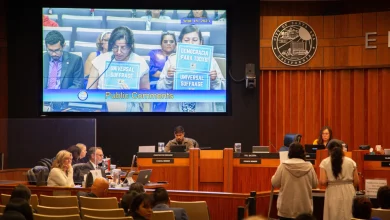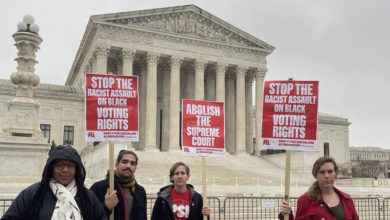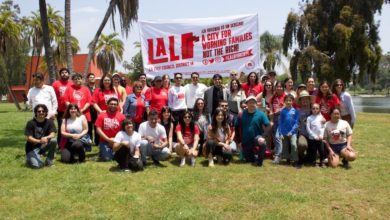On May 24, right-wing banker Guillermo Lasso took office as the president of Ecuador, having narrowly beaten left-wing economist Andrés Arauz in the April 11 election. The election was defined by a number of disinformation campaigns and legal obstacles directed against Arauz, pushed by right-wing officials and private media. But with the election now behind the country and the president sworn in, who is Guillermo Lasso, and what can we expect from his administration?
An architect of Ecuador’s financial ruin
Lasso held various jobs in the Ecuadorian financial sector in the 1970s. He would go on to found a construction company before joining the ranks of Coca-Cola in the 1990s. During the time Coca-Cola was allegedly hiring hitmen to kill union organizers in neighboring Colombia, Lasso took over the company’s Ecuadorian operations, restoring the company to profitability in the country. He would later become the CEO of Banco Guayaquil and sit on the boards of several large corporations and banks.
Lasso began his political career in 1998, appointed to governor of the Guayas province just as the national government began a mass privatization campaign. Public utilities and corporations were sold off en masse. As the country’s economy collapsed in 1998 and 1999, Lasso was appointed to a newly created position of Superminister of the Economy. He managed a $400 million loan from the International Monetary Fund, with an additional $850 million in multilateral credits. In return, Ecuador was expected to “balance” the 2000 budget, which in practice means further selling of public assets to private finance capital interests. The following year, president Jamil Mahuad, who appointed Lasso, was ousted in a mass uprising.
In 2003, Lasso was appointed to the newly established position of “Itinerant Ambassador” by president Lucio Gutiérrez. Gutiérrez, a colonel who participated in the ouster of Mahuad, quickly betrayed the burgeoning popular movement and returned Mahuad’s right-wing economic “superminister” to this new position in the government. The position was dissolved after just 3 months.
In total, Ecuador saw seven presidents in nine years. Figures like Lasso constantly saw themselves through the revolving door of new political positions as they privatized the country’s public assets.
A vicious opponent of progressivism
In 2007, the Citizens Revolution movement spearheaded by Rafael Correa came to power, stabilizing both the economy and the political situation for the next decade. Correa’s administration canceled predatory IMF loans, kicked the U.S. military out of the country, and harnessed much of the country’s natural resources for the benefit of working people.
Lasso reemerged as a political figure in stark opposition to the gains of the Citizens Revolution. He was unable to win his first two presidential runs due to the popularity of the Correistas and his own role in the 1999 financial collapse. During the course of these campaigns, further evidence of his corruption was revealed, including Florida-based shell companies containing 144 properties worth over $30 million.
In 2012, he formed the Creating Opportunities (CREO) Party. He ran against Rafael Correa twice, in 2013 and 2017, on an explicitly anti-Correismo platform. CREO enjoys a symbiotic relationship with right-wing media and a notoriously corrupt polling firm, CEDATOS, which consistently downplayed the popularity of the Correista movement and overplays the popularity of the right wing. However, in the first 10 years of Correismo, it did not affect the outcome.
The Moreno administration’s betrayal of the Citizens Revolution threw a wrench into the plans of the progressives. The subsequent demoralization allowed a united right wing to eek out a slight victory of 52% over Arauz’s 48%. A vicious lawfare campaign targeted Correo with obscene corruption allegations and prevented the Arauz campaign from using Correo’s likeness. Capitalist private media attempted to tie Arauz to the deeply unpopular Moreno administration, when in fact, Lasso had direct monetary ties to the Moreno administration. At one point, the Colombian far right even spread disinformation videos accusing Arauz of being in league with socialist guerrillas. Finally, the U.S.-backed “ecosocialist” opposition bloc of Yaku Perez, who had supported Lasso in previous campaigns, encouraged citizens to spoil the election with a “null” vote.
Moreno’s betrayal of Correismo cost him all chance of reelection. His popularity dropped from 77% in 2017 to a low of 5% in early 2021. But dirty tactics aimed at disqualifying Arauz, coordination with U.S. imperialism, and constant disinformation allowed him to throw the election to a fellow right-winger and austerity pusher. Lasso, who lost two previous presidential elections, does not enter his presidency with a wide people’s mandate. Instead, he will likely preside over continued turmoil and resistance.
Lasso’s agenda is ‘business as usual’ austerity and repression
A Lasso administration in Ecuador will be the embodiment of the “nothing will fundamentally change” ethos.
Socially, Lasso has postured as relatively tolerant on issues such as abortion and LGBTQ rights. But he is a member of the highly conservative religious order Opus Dei. He is unlikely to publicly support any “socially liberal” initiatives, much less materially support oppressed groups.
He has also paid lip service to environmentalism, making a generic statement that “we cannot leave this planet without delivering it in a better state than we received it,” but he has also committed to continuing resource extraction without any concrete environmental steps. As a developing country, Ecuador has a right to utilize its resources. Both Lasso and Arauz recognized this point. Under Lasso, however, the mineral wealth will likely flow back into the hands of U.S. corporations rather than for the good of the Ecuadorean people.
Ecuadorean foreign policy under Lasso will likely continue the country’s trajectory back into the right-wing bloc led by Brazil, Colombia, the OAS, and of course, the United States. Lasso has pledged “all of our support” to the U.S.-backed puppet Juan Guaidó. Former Exxon lawyer Carlos Vecchio, Guaidó’s “ambassador,” tweeted a photo of himself with Lasso in congratulations. On his very first day as president, Lasso tweeted a picture of himself meeting with far-right Venezuelan serial coup-monger Leopoldo Lopez.
Economically, Lasso can be expected to attempt to follow the neoliberal path of IMF loans, budget cuts for social services, and privatization that he has historically supported. He has promised “lower taxes.”
Lasso’s “Creating Opportunities” party only creates opportunities for U.S. capitalist interests. Despite the hollow rhetoric about uniting Ecuadoreans, Lasso’s agenda pushes the same austerity and privatization of his predecessor. But the people of Ecuador have demonstrated time and again their ability to struggle intensely in huge numbers against just this type of right-wing, anti-worker politician.






